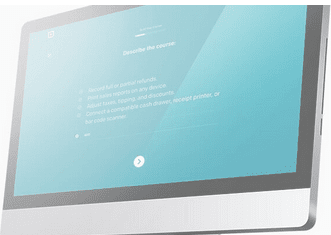What Pokémon GO Can Teach Learning and Development Professionals

You certainly wouldn’t want employees spending time during the work day trying to find Pikachu in the break room, but the game’s popularity can provide insights into the future of workplace learning and development. Last week, comScore, a research firm that measures Internet usage and statistics, released some interesting though not surprising findings: smartphone and […]
How Long Does It Take Instructional Designers to Create One Hour of Learning?

In an age of YouTube, where 60 hours of video are uploaded every minute, course creation shouldn’t be too difficult or time-consuming, right? Instructional Designers and development teams always identify the single biggest resource constraint for creating learning: time. Much has been written about how to estimate the hours needed to create quality courses. Several factors include: […]
Instructional Design for Non-Instructional Designers

According to Deloitte, less than 6 percent of L&D leaders believe that their teams have the necessary capabilities to provide adequate learning. More encouragingly — though still surprisingly low — 38 percent of L&D professionals think that their organizations are ready for the learners of the future, according to ATD Research. It stands to reason […]
Are You Using the Right KPIs for Your Learning Initiatives?

The success of learning initiatives needs to be measured and communicated via key performance indicators (KPIs). KPIs allow you to measure the success of not only the efforts of the L&D department, but also your programs across the entire organization. This is the hard part. ‘Universal’ or traditional KPIs might be the following: Sales Money […]
Crushing the ‘Forgetting Curve’

Learner retention is perhaps the most important metric to measure the success of L&D initiatives. However, as we’ve covered in this blog before, the vast majority — often as high as 90 percent — of new skills are lost within a year if not reinforced by practical follow-ups or assessments. A recent article in Chief Learning […]
More Bad News for For-Profit Colleges

News last week that an accreditation group for for-profit colleges may lose its federal recognition has prompted many L&D leaders to re-think their strategy of making courses from such programs available for their employees. According to the Associated Press, an advisory panel to the Department of Education (DOE) has voted to recommend the government sever […]
Can You Really Speed Up Instructional Design?

With more and more responsibility falling on the shoulders of today’s learning and development leaders, the process of course development does not have the luxury of time and other resources it once had. What is the beleaguered L&D executive to do? Instructional designer Diane Valenti, in the article, 6 Secrets for Speeding Up Instructional Design, published […]
STUDY: High Performers Share Knowledge

A recent study by the Association for Talent Development (ATD), Building a Culture of Learning: The Foundation of a Successful Organization, uncovered insights of high-performance organizations regarding their learning and development initiatives. The report found that in the best companies, employees share what they know. In such organizations, employees are four times more likely to share […]
Pencils Down: Why Testing Still Matters

Sure, employees want to learn. But they dread having to take a test afterwards. Let’s face it: we live in a testing culture, and it’s not abating anytime soon. From high school students sweating through the SAT to exams qualifying employees for the Six Sigma Black Belt certification, testing will always be a part of […]
People Still Want to Learn from Others

We all love our devices and the always on nature of the Internet and apps, but experts agree: we need social interaction when we need to learn. A recent interview with L&D experts, published in Chief Learning Officer magazine, found that employees prefer to learn by observing, reaching out, and interacting with others. “That social […]
